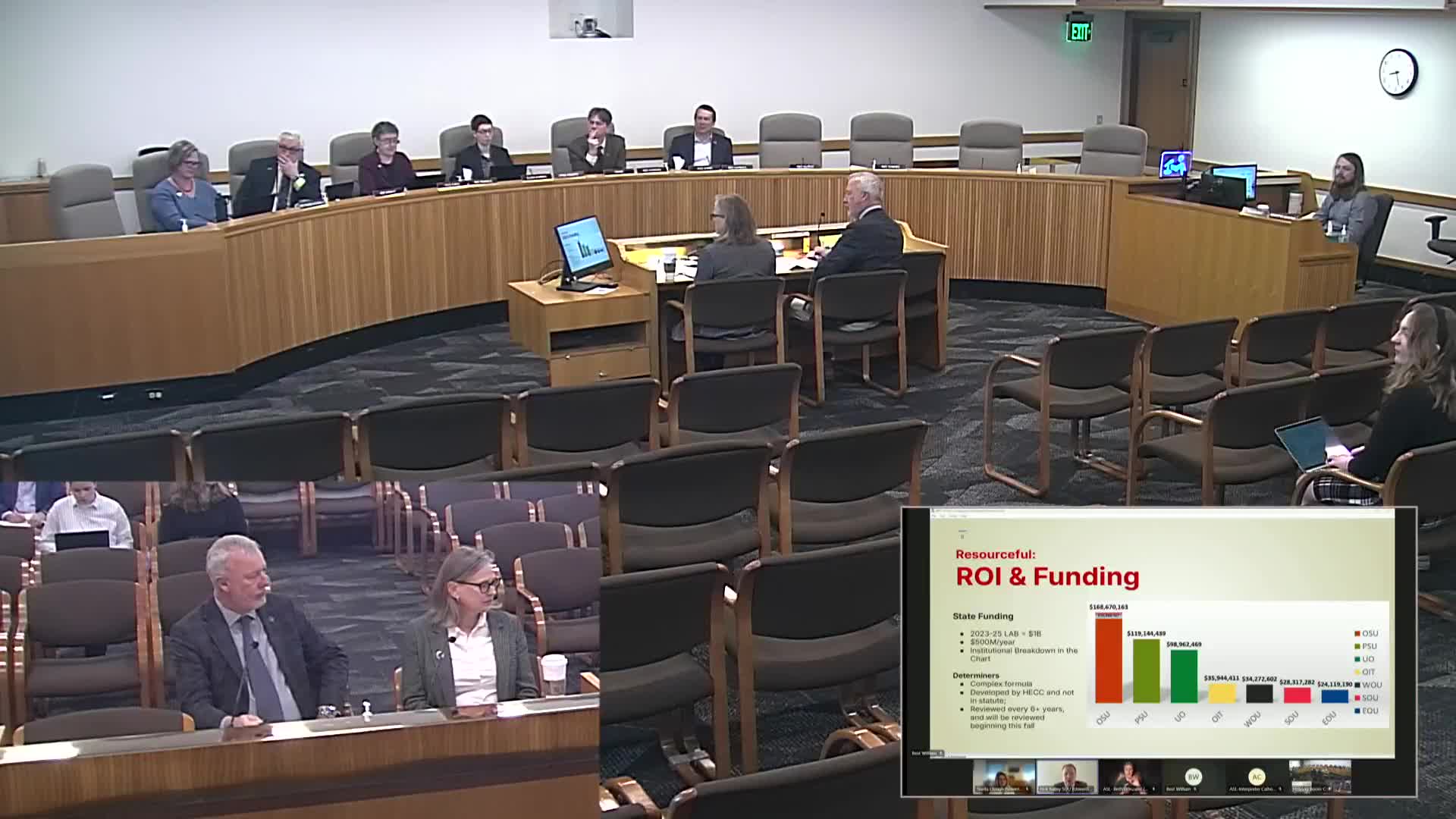Oregon university presidents advocate for $1.275B funding to support student affordability
May 01, 2025 | Higher Education, House of Representatives, Committees, Legislative, Oregon
This article was created by AI summarizing key points discussed. AI makes mistakes, so for full details and context, please refer to the video of the full meeting. Please report any errors so we can fix them. Report an error »

The House Committee on Higher Education and Workforce Development convened on May 1, 2025, to discuss critical funding issues affecting Oregon's public universities. The meeting highlighted the financial challenges faced by institutions and the impact on students.
University leaders, including President Rick Bailey of Southern Oregon University (SOU), presented data showing that a significant portion of state funding is consumed by mandatory costs such as retirement and medical benefits. Bailey noted that over half of SOU's $28 million share of the Public University Support Fund is allocated to these expenses, leaving little for essential services like salaries and student support. He emphasized that students are ultimately bearing the financial burden, with an average tuition cost that is $3,000 higher than the state funding provided per student.
The discussion also compared Oregon's funding model to those of neighboring states, revealing a concerning imbalance. Bailey pointed out that while other states manage to balance state investment and student tuition more effectively, Oregon lags behind, affecting the affordability of higher education.
President Jesse Peters of Western Oregon University echoed these concerns, advocating for a funding request of $1.275 billion for the Public University Support Fund for the 2025-2027 biennium. He stressed the importance of this funding to maintain access and affordability for students, especially during uncertain financial times.
Both university presidents underscored the role of higher education as an economic engine for the state, capable of addressing key issues such as housing and workforce development. They called for increased investment in public universities to ensure they can continue to serve students and contribute to the state's economic prosperity.
The meeting concluded with a call to action for state legislators to prioritize funding for higher education, emphasizing the long-term benefits for both students and the broader community.
University leaders, including President Rick Bailey of Southern Oregon University (SOU), presented data showing that a significant portion of state funding is consumed by mandatory costs such as retirement and medical benefits. Bailey noted that over half of SOU's $28 million share of the Public University Support Fund is allocated to these expenses, leaving little for essential services like salaries and student support. He emphasized that students are ultimately bearing the financial burden, with an average tuition cost that is $3,000 higher than the state funding provided per student.
The discussion also compared Oregon's funding model to those of neighboring states, revealing a concerning imbalance. Bailey pointed out that while other states manage to balance state investment and student tuition more effectively, Oregon lags behind, affecting the affordability of higher education.
President Jesse Peters of Western Oregon University echoed these concerns, advocating for a funding request of $1.275 billion for the Public University Support Fund for the 2025-2027 biennium. He stressed the importance of this funding to maintain access and affordability for students, especially during uncertain financial times.
Both university presidents underscored the role of higher education as an economic engine for the state, capable of addressing key issues such as housing and workforce development. They called for increased investment in public universities to ensure they can continue to serve students and contribute to the state's economic prosperity.
The meeting concluded with a call to action for state legislators to prioritize funding for higher education, emphasizing the long-term benefits for both students and the broader community.
View full meeting
This article is based on a recent meeting—watch the full video and explore the complete transcript for deeper insights into the discussion.
View full meeting
